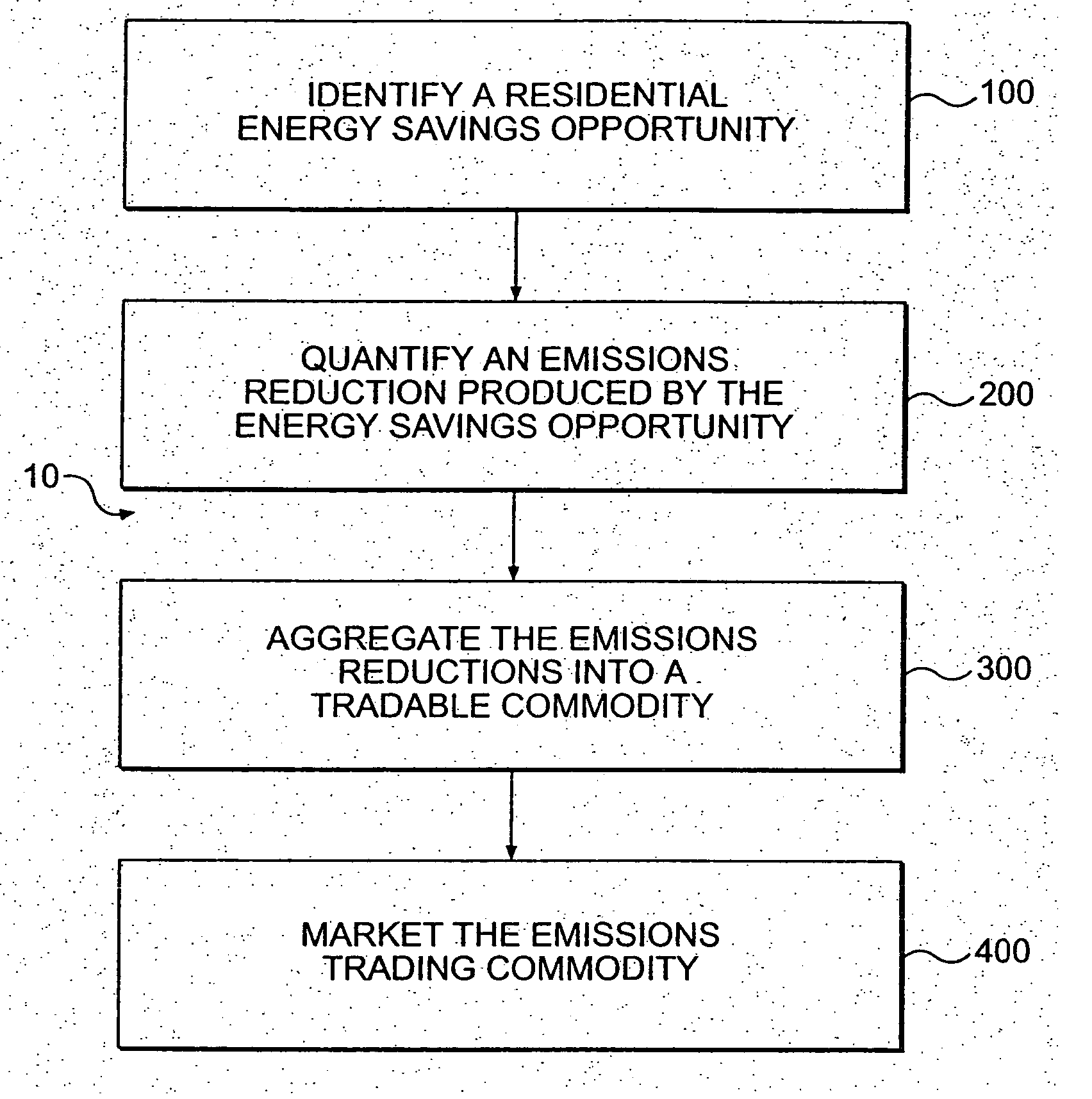System and method for residential emissions trading
a technology of emissions trading and residential homes, applied in non-electric variable control, process and machine control, instruments, etc., can solve the problems of insufficient recognition of residential emission savings, prohibitive transaction costs, and inability to quantify, certify, and transfer the reductions. the effect of energy savings from a simple individual hom
- Summary
- Abstract
- Description
- Claims
- Application Information
AI Technical Summary
Benefits of technology
Problems solved by technology
Method used
Image
Examples
Embodiment Construction
[0049] Reference will now be made to the method of the present invention, an example of which is shown in FIG. 1.
[0050]FIG. 1 is a flow chart depicting an embodiment of the method for identifying, quantifying, and aggregating reductions in residential emissions. As embodied herein, the method 10 comprises the steps of identifying a residential energy savings opportunity 100, quantifying an emissions reduction produced by the energy savings opportunity 200, and aggregating the emissions reductions into a tradable commodity 300, such as, but not limited to, emissions reductions or emissions trading credit(s). The method may further comprise the step of marketing the emissions trading commodity 400.
Identification of Energy Savings Opportunities
[0051] Step 100, identifying a residential energy savings opportunity, may comprise any one or more of a variety of energy efficient improvements. Such improvements may include, but are not limited to: replacing older appliances with more ener...
PUM
 Login to View More
Login to View More Abstract
Description
Claims
Application Information
 Login to View More
Login to View More - R&D
- Intellectual Property
- Life Sciences
- Materials
- Tech Scout
- Unparalleled Data Quality
- Higher Quality Content
- 60% Fewer Hallucinations
Browse by: Latest US Patents, China's latest patents, Technical Efficacy Thesaurus, Application Domain, Technology Topic, Popular Technical Reports.
© 2025 PatSnap. All rights reserved.Legal|Privacy policy|Modern Slavery Act Transparency Statement|Sitemap|About US| Contact US: help@patsnap.com



